Ancientbruisesbrokenruses - Untitled



More Posts from Ancientbruisesbrokenruses and Others
This is literally me.
Writing Motivations
Spite
Inspiration
Hungry for Validation
Make readers go “Wow!”
Make readers go “Oh!”
Make readers go :’((
Horny
Dragons
Whom else is going to write this if not me??
They Gave Me a Keyboard and Cannot Take it Away Now
I Invented Several Languages and Must Use Them Somewhere
These characters are REAL and have things to do
I Like to Suffer
I like to be gay and unhinged but in a productive way
I care about my OCs and so must you now
I have issues I need to project on SOMETHING
Love is not fake and here is why, an entire book
Words Pretty
How I Plan...
Building a story or series from the ground up with the help of templates!
This is how I approach planning. It covers what I do up to the point of opening a blank document and typing the first word.
Despite the tags this isn’t going to be ‘how to’ or advice based because who am I to tell you how to plan a story? This is only an option:) I engourage you to steal liberally but also question whether or not this method will work for you. If you don’t vibe with something, throw it out!

*you don’t have to answer these questions in order.
STRUCTURE LEVEL
Genre/Sub-genres: Picking a genre can help you find ideas/tropes faster. If you’ve written or read a book before you probably know the types of stories you like.
Age Category: This can help you find themes for you story. I like to sepate genre and cataegory since you can have a young adult or an adult romance.
Point Of View: Pick who will tell the story. Will there be more than one?
Tense: First, second or third person? Past or present?
Formatting: How will the story be split up? Through chapters or parts. I also like to put whether or not I’ll have a playlist, any quotes or epigraphs, prologues or epilogues, anything like that.
Tone: Will your story be serious, light hearted, sad, satirical...etc
Atmosphere/Color palette: I like to use this for when I’m writing description. Using specificities to elevate your writing can bring a world together and make it feel real.
Overall Concept: As vague as you’d like it to be! I usually give a few sentences.
Comparison Titles: I love to use comparison titles in the beginning when nothing has been solidified. It helps me know what came before me while still generating lots of inspiration.
SERIES LEVEL
Series Title: I usually base it off the first books title or a significant thing that links all the stories together.
Number of stories you want: I don’t always know how many stories will be in a series but it’s good to have a rough esimate of how many you’d like to write.
Number of stories realistically achievable: But we all know that sometimes an idea just isn’t sustainable for a 10 book series but works rather well as a trilogy instead.
Story that will kick off the series: All of your stories should fit a purpose in the series but this book will take the roll as a set-up (not to be confused as ‘filler’) for the rest of your series. It’s just something to have in mind when planning. This way you can plant twists and foreshadowing for the rest of the books.
Story that will close out the series: This story has big shoes to fill since you’ve probably been amping everything up to an explosive finish but at the end of the day it doesn’t matter if it’s bigger and better than what came before, it only matters if it’s a satisfying close to the whole series.
Summarize each story
Story # 1 summary ...you get the idea
Timeline: I like to know what year the series starts and when it will end. It might sound complicated but it’s so helpful. You don’t want a character to be pregnant or something for three books if the the stories have spanned more than nine months.
Spin-offs: You might find that you’ve got some ideas that don’t quite fit in with the others but they have some common elements. A spin-off is a cool way to explore those other ideas.
Naming conventions: I like to name my individual stories similar things to keep a theme. Example: J. R. Wards Black Dagger Brotherhood series has book titles with the word ‘Lover’ in them. There’s also naming conventions like the ACOTAR series by Sarah J. Maas that go “A Court of Blank and Blank”
SETTING LEVEL
Town/City/Village Name:
Area Description:
State/Province:
Country:
Common Weather:
Population:
Popular Figures:
Popular Locations:
Historical Background and Events:
What might the town be hiding to the average passer-by?
*You can definitely add more questions depending on your story. I write mostly within our world but I do like to create fictional towns.
CHARACTER LEVEL
Full Name:
Age:
Role:
Title/Rank/Occupation:
Wants:
Fears:
Misbelief:
Description/Faceclaim:
Personality Traits:
Zodiac Sign:
MBTI:
Theme Song:
Backstory:
Daily Life:
* Again, you can add any more questions you’d like to. These are just the ones I like to use to get going. Some of them are super vague, so in Daily Life I’ll put their living arrangement, transportation, pets or anything like that. I also add loads of stuff in their Description such as sexuality, how they dress, tattoos or scars, etc.
GROUP
*this is for anything like a fictional club, cult, company, evil organization or something like that.
Name:
Sub-divisions:
Type:
Founder:
History:
Current Leader:
Headquarters:
Current Operation:
Biggest Threat:
Biggest Allies:
Council Members (include roles):
Other Members (include roles):
STORY LEVEL
Working Title: Sometimes I use something concrete but if I need to get it out of the way I’ll put something like Project Black.
Estimated Length: Word or chapter count you’d like to achieve.
Order: Which book in the series is it?
Premise: I like to refer to this as the summary’s skeleton.
Tropes:
Subplot(s):
Story Summary:
Story Theme Song: This is just for fun but sometimes it really helps me capture what the whole story might be. I can also use it when I’m low on inspiration.
BEAT LEVEL
* I’d recommend googling an explanation of story beats or purchasing Blake Snyder or Jessica Brody’s book on Save The Cat beat sheet. But on the other hand, you don’t have to use a beat sheet at all. And if at any point during planning you feel like you’re ready to write then go for it!
Opening Image: An image that catapults your audience into the look and feel of your story
Theme Stated: Typically the theme of the story is communicated by someone fairly early on. This is dialogue spoken to the protagonist that he doesn’t quite grasp yet.
Set-Up: Show the protagonist in their “old world.” Let the audience know what the status quo is for them, then hint at the adventure that follows. This is also a time to introduce secondary characters.
Catalyst: Sometimes called the “inciting incident,” the catalyst is the event that disrupts your protagonist’s status quo. But they’re not ready to make the choice that catapults them into the story just yet.
Debate: This is where the protagonist has doubts about setting out on their perilous journey.
Break into Two: Inevitably, your protagonist will overcome their doubt and make a choice to set out on their adventure. This is the choice that sets the plot in motion. Your beat sheet will be filled with obstacles and twists resulting from making this choice from here on out.
B Story: A subplot ensues. Some would say that this is usually a romantic subplot.
Fun and Games: Plot structure requires a stretch where your protagonist wields their new power, and does cool stuff with it. I’ve also heard this referred to as the Promise of The Premise. So in Hunger Games by Susanne Collins this would be Katniss actually fighting in the games.
Midpoint: At some point, your protagonist will either get what they’re after... or not. But there will be consequences either way.
Bad Guys Close In: After your protagonist gets what they want, or not, there will be consequences. These forces will tighten their grasp, and throw the protagonist off balance.
All Is Lost: The dire circumstances your protagonist endures will lead to an inevitable loss. Which can be anything but it most commonly a character death.
Dark Night of the Soul: At this point of the Save the Cat beat sheet template, your protagonist has lost hope.
Break into Three: In plot structure, this is where your protagonist claws around in the darkness, only to find or remember something useful.
Finale: Treat the finale as the Act 3 summary. The Save the Cat beat sheet template is at its end, so it’s time for the protagonist to take on their foes. Armed with new tools and self-discoveries, the protagonist often synthesizes what they've learned (in Act 2) with values they've always had (Act 1).
Final Image: Along with the opening image, the final image creates the bookend that encapsulates the journey. This is the last thing the audience is left with.
*Closing thoughts: I have never used just a beat sheet because they don’t resonate with me for every story. I always add stuff or take away. I think there is a special beat missing between the Finale and Final image and that is where the characters slow down, take a breath and reflect on everything they’ve experienced. I also think Romance is the hardest genre to use the beat sheet with but I do a hybrid of the Beat Sheet from Save The Cat Writes A Novel! By Jessica Brody and Romancing the Beat by Gwen Hayes for the most part.
NOW JUST WRITE! :)
I hope this was helpful in some way or another! DM me or reply with any questions or for clarification. I have many more posts I’d like to create (on my process) but if you have any ideas or topics I should make posts on let me know.
Good luck and happy writing!
Don’t know if anyone remembers this, but Alexander Hamilton was a real person. A pretty amazing person, if you ask me. And, that’s was one bloody time and then there was the whole mess with he Reynolds Pamphlet…He made a mistake, he owned up to it, didn’t try to make too many excuses(’it was an accident!’ ‘i swear, it just happened!’ ‘It all happened so fast!’ ‘i swear I didn’t mean it!’ ‘i love you!’ Etc). Do you want me to rant about John Laurens right now? I will, that way you won’t be able to use him against my argument. Which would be idiocy and I hope you aren’t an idiot.
Slutshaming women is not ok Slutshaming Alexander Hamilton is totally ok Tumblr logic










TOM HIDDLESTON
Art of Villainy - Jaguar
#actionwritingreferenceone
How do you write a fight scene without becoming repetitive? I feel like it just sounds like "she did this then this then this." Thanks so much!
I watch her as she fights. Her left leg flies through the air – a roundhouse – rolling into a spin. She misses, but I guess she’s supposed to. Her foot lands and launches her into a jump. Up she goes again, just as fast. The other leg pumps, high knee gaining altitude. The jumping leg tucks. Her body rolls midair, momentum carrying her sideways. She kicks. A tornado kick, they call it. The top of her foot slams into Rodrigo’s head, burying in his temple. Didn’t move back far enough, I guess.
His head, it snaps sideways like a ball knocked off a tee. Skull off the spine. His eyes roll back, and he slumps. Whole body limp. Legs just give out beneath him. He clatters to the sidewalk; wrist rolling off the curb.
She lands, making the full turn and spins back around. Her eyes are on his body. One foot on his chest. I don’t know if he’s alive. I don’t know if she cares. Nah, she’s looking over her shoulder. Looking at me.
The truth twists my gut. I should’ve started running a long time ago.
The first key to writing a good fight scene is to tell a story. The second key is having a grasp of combat rules and technique. The third is to describe what happens when someone gets hit. The fourth is to remember physics. Then, roll it all together. And remember: be entertaining.
If you find yourself in the “and then” trap, it’s because you don’t have a firm grasp of what exactly it is your writing. “He punched” then “She blocked” then “a kick” only gets you so far.
You’ve got to get a sense for shape and feeling, and a sense of motion. Take a page from the comic artist’s playbook and make a static image feel like it’s moving. Try to remember that violence is active. Unless your character is working with a very specific sort of soft style, they’re attacks are going to come with force. So, you’ve got to make your sentences feel like your hitting something or someone.
“Ahhh!” Mary yelled, and slammed her fist into the pine’s trunk. A sickening crack followed, then a whimper not long after.
Angie winced. “Feel better?”
Shaking out her hand, Mary bit her lip. Blood dripped from her knuckles, uninjured fingers gripping her wrist. She sniffed, loudly. “I…” she paused, “…no.”
“You break your hand?”
“I think so. Yeah.”
“Good,” Angie said. “Think twice next time before challenging a tree.”
Let your characters own their mistakes. If they hit something stupid in anger, like a wall or a tree then let them have consequences.Injury is part of combat. In the same way, “I should be running now” is. When the small consequences of physical activity invade the page, they bring reality with them.
People don’t just slug back and forth unless they don’t know how to fight, or their only exposure to combat is mostly movies or bloodsport like boxing. Either way, when one character hits another there are consequences. It doesn’t matter if they blocked it or even deflected it, some part of the force is going to be transitioned into them and some rebounds back at the person who attacked.
Your character is going to get hurt, and it’ll be painful. Whether that’s just a couple of bruises, a broken bone, or their life depends on how the fight goes.
However, this is fantasy. It is all happening inside our heads. Our characters are never in danger unless we say they are. They’ll never be hurt unless we allow it. A thousand ghost punches can be thrown and mean absolutely, utterly nothing at all to the state of the character. This is why it is all important to internalize the risks involved.
The writer is in charge of bringing a dose of reality into their fictional world. It is much easier to sell an idea which on some level mimics human behavior and human reactions. The ghost feels physical because we’ve seen it happen on television or relate to it happening to us when we get injured.
You’ve got five senses, use them. You know what it feels like to get injured. To be bruised. To fall down. To be out of breath. Use that.
Here’s something to take with you: when we fight, every technique brings us closer together. Unless it specifically knocks someone back. You need specific distances to be able to use certain techniques. There’s the kicking zone, the punching zone, and the grappling zone. It’s the order of operation, the inevitable fight progression. Eventually, two combatants will transition through all three zones and end up on the ground.
So, keep the zones in mind. If you go, “she punched, and then threw a roundhouse kick” that’s wrong unless you explain more. Why? Because if the character is close enough to throw a punch, then they’re too close to throw most kicks. The roundhouse will just slap a knee or a thigh against the other character’s ribs, and probably get caught. If you go, “she punched, rammed an uppercut into his stomach, and seized him by the back of the head”, then that’s right. You feel the fighters getting progressively closer together, which is how its supposed to work.
Use action verbs, and change them up. Rolled, rotated, spun, punched, kicked, slammed, rammed, jammed, whipped, cracked, etc.
You’ve got to sell it. You need to remember a human’s bodily limits, and place artificial ones. You need to keep track of injuries, every injury comes with a cost. Make sure they aren’t just trading blows forever.
I’ve seen advice that says fights all by themselves aren’t interesting. I challenge that assertion. If you’re good at writing action, then the sequence itself is compelling. You know when you are because it feels real. Your reader will tune out if it isn’t connecting, and the fight scene is a make or break for selling your fantasy. It is difficult to write or create engaging, well choreographed violence that a reader can easily follow and imagine happening.
-Michi
This blog is supported through Patreon. If you enjoy our content, please consider becoming a Patron. Every contribution helps keep us online, and writing. If you already are a Patron, thank you.


colored some doodles
The Fuck Is Happening?
So usually I suck—and I mean suck—at naming characters. It takes me forever and a plethora of research before I even get a working name. Now? I’ve come up with three off the top of my head, only looking up one name(Aysha) which is fair because of the rarity of it. Though I came up with some…odd surnames. Greenbay and Greyborn. Like…what? Where did those come from? This is contemporary. Set in real life.
Apps For Writers I Wish I Had
So, as a writer who’s more lazy than my cats, I spend many a sleepless night thinking up apps for me to use to make the process much easier. These are a few of those.
One: A app where you can enter a name and click ‘search’ and it will tell you if it’s okay to use in a project. You can specify wether it’s a person name, an establishment name, a place name, etc. to refine your search. A possible name would be ‘Name Check’ or some variant. Two: a face claim app. You can specify the basics of your character and it will pull up pictures/face claims matching the description. Eg. ‘hazel eyes’ ‘black hair’ ‘male’ ‘freckles’ and so on getting more and more specific.
Three: an app for job research. You type in the job you have for your character and it pulls up real life accounts of people with that job. It would explain what the basics are, day to day routine, schooling necessary, hazards, time, etc. Note that this only applies to real life jobs, not fantasy
Four: a music app. You give the browser the themes, feelings, etc. of your project and it pulls up music that fits that. Also can define by genre. Also applicable for characters.
Five: kind of goes along with face claim. A scene reference app. You give the feeling, genre, what you know about it, etc. and it pulls up pictures that match that for you to reference. To see it in front of you.
Six: This one is sort of like three. Need to write a scene you’ve never experienced? This gives you kind of like a guideline Do’s and Don’ts, if you will. Someone who’s experienced it explains(to the best of their abilities) what they were feeling. You have to know your character well enough to change those feelings to fit your character. Not for fantasy. Seven: Character name checking. It’s a fucking pain to have to figure out if this awesome name is available to use in a book or anything that’s going to be written by you. With this, all you have to do is type in the name and if it turns green, it’s safe to use.
Nooo! Many of the links I need are gone.
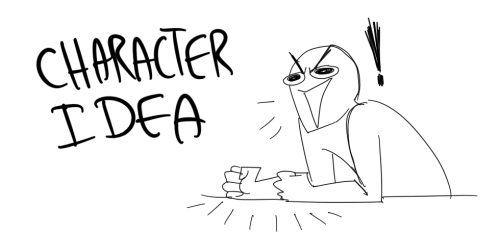
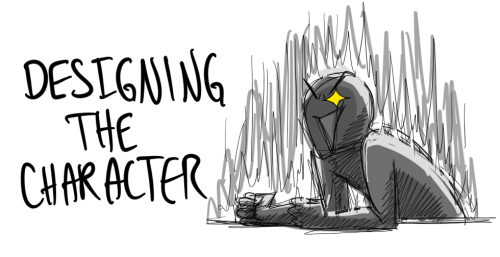
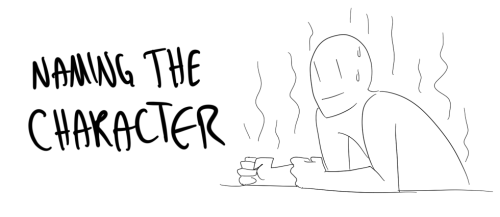
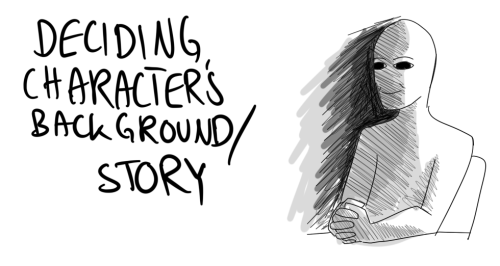
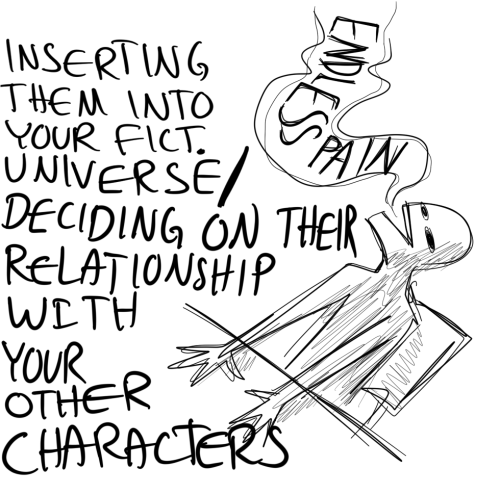
the suffering never ends










TOM HIDDLESTON
Art of Villainy - Jaguar
-
 inkandcozysweaters reblogged this · 1 week ago
inkandcozysweaters reblogged this · 1 week ago -
 noirnotorious reblogged this · 1 week ago
noirnotorious reblogged this · 1 week ago -
 thinkon-thesethings reblogged this · 1 week ago
thinkon-thesethings reblogged this · 1 week ago -
 jeslilas liked this · 1 week ago
jeslilas liked this · 1 week ago -
 gone-to-fight-the-fairies reblogged this · 2 weeks ago
gone-to-fight-the-fairies reblogged this · 2 weeks ago -
 nefelejtsdelhogykivagy reblogged this · 3 weeks ago
nefelejtsdelhogykivagy reblogged this · 3 weeks ago -
 nefelejtsdelhogykivagy liked this · 3 weeks ago
nefelejtsdelhogykivagy liked this · 3 weeks ago -
 s0ltant0illusioni liked this · 3 weeks ago
s0ltant0illusioni liked this · 3 weeks ago -
 nyctophilia-al reblogged this · 3 weeks ago
nyctophilia-al reblogged this · 3 weeks ago -
 nyctophilia-al liked this · 3 weeks ago
nyctophilia-al liked this · 3 weeks ago -
 rebeldottie reblogged this · 4 weeks ago
rebeldottie reblogged this · 4 weeks ago -
 alittleperiwinkle liked this · 4 weeks ago
alittleperiwinkle liked this · 4 weeks ago -
 dawnsangel reblogged this · 4 weeks ago
dawnsangel reblogged this · 4 weeks ago -
 ab0iledpeanut reblogged this · 1 month ago
ab0iledpeanut reblogged this · 1 month ago -
 sagittariuswitchery reblogged this · 1 month ago
sagittariuswitchery reblogged this · 1 month ago -
 venusin-aries reblogged this · 1 month ago
venusin-aries reblogged this · 1 month ago -
 earthsagittarius liked this · 1 month ago
earthsagittarius liked this · 1 month ago -
 mulberryhill liked this · 1 month ago
mulberryhill liked this · 1 month ago -
 potter-solomons liked this · 1 month ago
potter-solomons liked this · 1 month ago -
 itadaramaterasu liked this · 1 month ago
itadaramaterasu liked this · 1 month ago -
 belovedrival reblogged this · 1 month ago
belovedrival reblogged this · 1 month ago -
 mr-boxes liked this · 1 month ago
mr-boxes liked this · 1 month ago -
 browneyesneverforgett reblogged this · 1 month ago
browneyesneverforgett reblogged this · 1 month ago -
 honesttruthembraced reblogged this · 1 month ago
honesttruthembraced reblogged this · 1 month ago -
 useyourimagination2020 reblogged this · 1 month ago
useyourimagination2020 reblogged this · 1 month ago -
 f-llthevoid liked this · 1 month ago
f-llthevoid liked this · 1 month ago -
 starfalls-rainshowers reblogged this · 1 month ago
starfalls-rainshowers reblogged this · 1 month ago -
 likeitthabest reblogged this · 1 month ago
likeitthabest reblogged this · 1 month ago -
 the-rollingstone-rs reblogged this · 1 month ago
the-rollingstone-rs reblogged this · 1 month ago -
 the-rollingstone-rs liked this · 1 month ago
the-rollingstone-rs liked this · 1 month ago -
 ladyingreen7 liked this · 1 month ago
ladyingreen7 liked this · 1 month ago -
 dplusl2 liked this · 1 month ago
dplusl2 liked this · 1 month ago -
 shivani-lee liked this · 1 month ago
shivani-lee liked this · 1 month ago -
 adrimbologa liked this · 1 month ago
adrimbologa liked this · 1 month ago -
 bigsister-watches reblogged this · 1 month ago
bigsister-watches reblogged this · 1 month ago -
 narcissmalfoy reblogged this · 1 month ago
narcissmalfoy reblogged this · 1 month ago -
 roomforlight reblogged this · 1 month ago
roomforlight reblogged this · 1 month ago -
 ahsokasgfriend reblogged this · 1 month ago
ahsokasgfriend reblogged this · 1 month ago -
 ahsokasgfriend liked this · 1 month ago
ahsokasgfriend liked this · 1 month ago -
 myoutcastsoul reblogged this · 1 month ago
myoutcastsoul reblogged this · 1 month ago -
 venusin-aries liked this · 1 month ago
venusin-aries liked this · 1 month ago -
 slytheringlow reblogged this · 1 month ago
slytheringlow reblogged this · 1 month ago -
 sweetchillimoresweet reblogged this · 1 month ago
sweetchillimoresweet reblogged this · 1 month ago -
 the-language-in-me liked this · 1 month ago
the-language-in-me liked this · 1 month ago -
 nostrumutopia liked this · 1 month ago
nostrumutopia liked this · 1 month ago -
 mymindisfullofshit reblogged this · 1 month ago
mymindisfullofshit reblogged this · 1 month ago -
 meeresfrei reblogged this · 1 month ago
meeresfrei reblogged this · 1 month ago -
 mysweetaudrina79 reblogged this · 1 month ago
mysweetaudrina79 reblogged this · 1 month ago